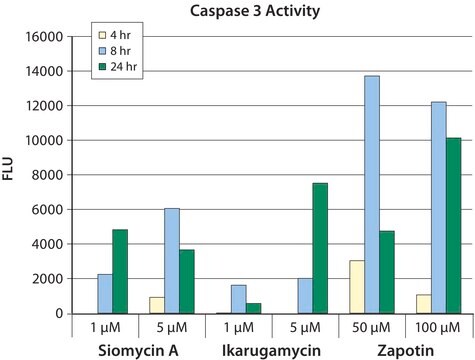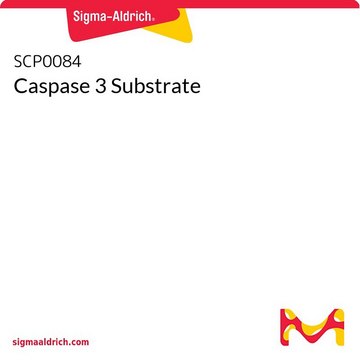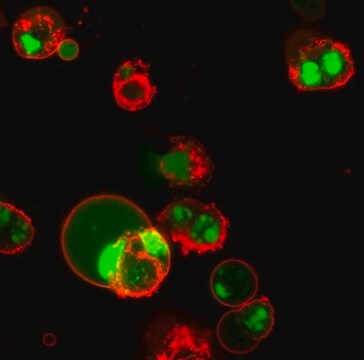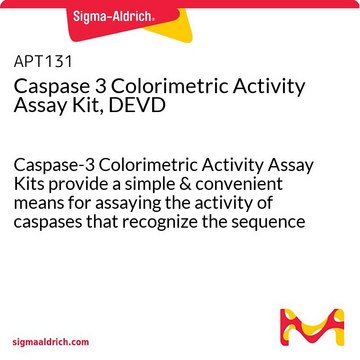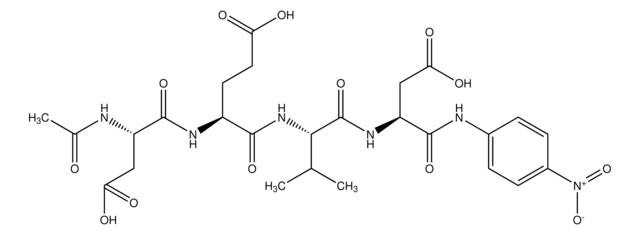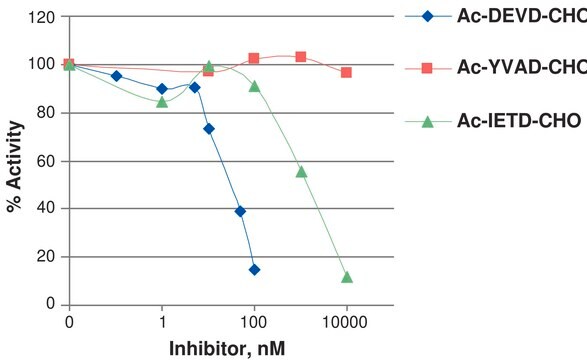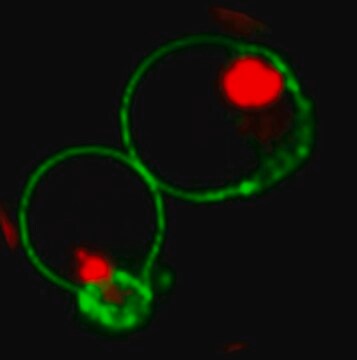CASP3C
Caspase 3 Assay Kit, Colorimetric
Synonyme(s) :
Colorimetric Caspase-3 Activity Assay Kit
About This Item
Produits recommandés
Utilisation
sufficient for 1,000 multiwell tests (in 96-well multiwell plates)
sufficient for 100 standard tests (1 ml)
Niveau de qualité
Conditions d'expédition
dry ice
Température de stockage
−20°C
Informations sur le gène
human ... CASP3(836)
Description générale
The Caspase 3 Colorimetric Assay Kit is based on the hydrolysis of acetyl-Asp-Glu-Val-Asp p-nitroanilide (Ac-DEVD-pNA) by caspase 3, resulting in the release of the p-nitroaniline (pNA) moiety. p-Nitroaniline is detected at 405 nm (εmM=10.5). The concentration of the pNA released from the substrate is calculated from either the absorbance values at 405 nm or from a calibration curve prepared with pNA standards (pNA standard included with the kit).
Application
Définition de l'unité
Autres remarques
Composants de kit seuls
- Water (17-18 megaOhm) 125 mL
Mention d'avertissement
Danger
Mentions de danger
Conseils de prudence
Classification des risques
Acute Tox. 3 Dermal - Acute Tox. 3 Inhalation - Acute Tox. 3 Oral - Aquatic Chronic 3 - STOT RE 2
Code de la classe de stockage
6.1C - Combustible acute toxic Cat.3 / toxic compounds or compounds which causing chronic effects
Point d'éclair (°F)
415.4 °F - closed cup
Point d'éclair (°C)
213 °C - closed cup
Certificats d'analyse (COA)
Recherchez un Certificats d'analyse (COA) en saisissant le numéro de lot du produit. Les numéros de lot figurent sur l'étiquette du produit après les mots "Lot" ou "Batch".
Déjà en possession de ce produit ?
Retrouvez la documentation relative aux produits que vous avez récemment achetés dans la Bibliothèque de documents.
Articles
Cellular apoptosis assays to detect programmed cell death using Annexin V, Caspase and TUNEL DNA fragmentation assays.
Notre équipe de scientifiques dispose d'une expérience dans tous les secteurs de la recherche, notamment en sciences de la vie, science des matériaux, synthèse chimique, chromatographie, analyse et dans de nombreux autres domaines..
Contacter notre Service technique
